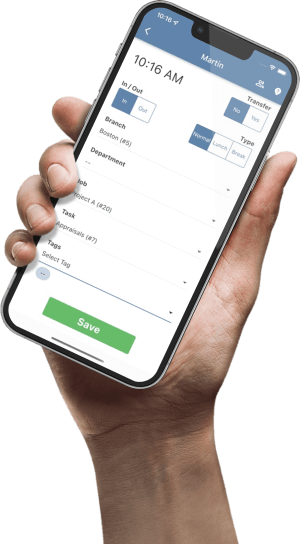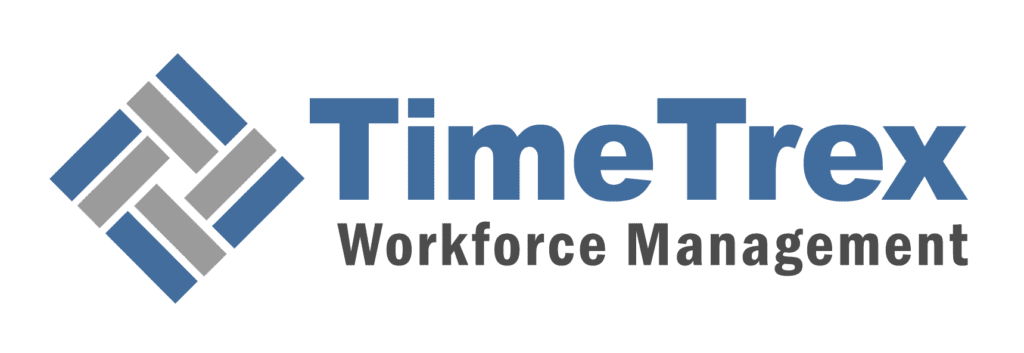Free New York State Payroll Calculator

How to Use the New York Payroll Calculator
Country and State Selection:
The calculator is pre-set to “United States” and “New York” to ensure accurate calculations based on New York’s specific tax laws and regulations. Please confirm these selections to proceed with calculations tailored to your location.
Federal and State Filing Status and Allowances:
Enter your federal and state filing status (e.g., Single, Married) and the number of allowances you’re claiming. This information is typically found on your W-4 form and any New York state withholding forms. Accurate entry of these details is crucial for determining the correct amount of tax to withhold from your paycheck.
Annual Pay Periods:
Select the frequency with which you are paid (e.g., weekly, bi-weekly, semi-monthly, monthly). This selection dictates how your annual salary is divided for the purposes of calculating per-pay-period withholdings.
Gross Wage / Pay Period:
Input your total earnings for the current pay period before any deductions or taxes. This should include your base salary, plus any overtime, bonuses, or other taxable income received during that period.
Pay Date:
Specify the date you will receive your paycheck. This helps align the calculator with your specific payroll cycle and can be important for certain date-sensitive deductions.
Calculation:
Once all the information has been entered, click the “Calculate” button. The calculator will then process your data and provide a detailed breakdown of your estimated net pay, including:
- Gross Pay: Your total earnings before any deductions.
- Federal Taxes: The amount withheld for federal income tax.
- State Taxes: The amount withheld for New York state income tax.
- Other Deductions: This will include deductions like Social Security, Medicare, and any other pre-tax or post-tax deductions such as health insurance premiums or retirement contributions.
- Net Pay: Your final take-home pay after all deductions and taxes have been subtracted.
Found our Free New York Payroll Calculator useful? Bookmark and share it.

New York Withholding Tax Requirements: What You Need to Know
Who is Required to Withhold Personal Income Tax in New York?
If you meet the definition of an employer as outlined in federal Publication 15, Circular E, Employer’s Tax Guide, and you operate an office or conduct business within New York State, you are obligated to withhold personal income tax. This requirement applies regardless of whether you maintain a paying agency within the state.
Exceptions for Out-of-State Employers:
Out-of-state employers who are neither incorporated nor licensed under New York State law, and who do not maintain an office or conduct business within the state, are generally exempt from withholding New York State, New York City, or Yonkers income taxes for employees residing in New York State.
However, if an out-of-state employer voluntarily agrees to withhold these taxes for the convenience of the employee, they then become subject to New York State withholding requirements.
Who Must You Withhold Tax For?
You are required to withhold tax for the following categories of employees:
- New York State Residents: Regardless of where their wages are earned.
- New York State Nonresidents: For wages earned from services performed within New York State.
- New York City Residents: Even if their services are performed outside of New York City.
- Yonkers Residents: Even if their services are performed outside of Yonkers.
- Yonkers Nonresidents: For wages paid for services performed within Yonkers.
Employee Non-Residency Certification:
If an employee claims non-residency for New York State, New York City, or Yonkers, they must provide certification and estimate the percentage of their wages attributable to services within these jurisdictions. This is done using Form IT-2104.1, New York State, City of New York, and City of Yonkers Certificate of Nonresidence and Allocation of Withholding Tax.
Staying Compliant:
Understanding and adhering to these withholding tax requirements is crucial for employers in New York. Be sure to stay updated on the upcoming changes in March 2025 and consult official resources for the most accurate and current information.
Understanding New York Payroll Tax Rates
Navigating New York’s payroll taxes requires attention to detail, especially regarding the state’s income tax structure. Here’s a breakdown of the key components:
New York State Income Tax (SIT)
New York’s State Income Tax (SIT) is a progressive tax system, meaning the tax rate increases with income. Calculating the correct SIT amount depends on several factors, including the employee’s income level and residency status.
Determining the Correct Calculation Method:
- For New York State Adjusted Gross Income (NYAGI) over $107,650:
- Use the New York State Tax Computation Worksheet for both resident and nonresident employees.
- For NYAGI under $107,650 and State Taxable Income $65,000 or More:
- Refer to the applicable tax rate schedules based on filing status (e.g., Single, Married Filing Jointly) for:
- Resident Employees
- Nonresident Employees
- Refer to the applicable tax rate schedules based on filing status (e.g., Single, Married Filing Jointly) for:
- For NYAGI under $107,650 and State Taxable Income under $65,000:
- Use the New York State Tax Tables for:
- Resident Employees
- Nonresident Employees
- Use the New York State Tax Tables for:
Additional New York SIT Details:
- Supplemental Withholding Computation:
- The supplemental withholding rate varies by jurisdiction:
- New York State: 11.7%
- New York City: 4.25%
- Yonkers: 1.95%
- Nonresident: 0.50%
- The supplemental withholding rate varies by jurisdiction:
- Valid Filing Statuses:
- S = Single, Married (claiming self), Head of Household
- M = Married (claiming both)


Additional New York Payroll Taxes and Benefits
Beyond state income tax, New York employers and employees must be aware of several other key payroll-related taxes and programs.
New York State Unemployment Insurance (SUI)
SUI provides financial assistance to eligible workers who lose their jobs through no fault of their own.
- Taxable Wage Base: $12,800
- Employee Subject to Tax: No
- Rates for Experienced Employers: 2.10% – 9.90%
- Rates for New Employers: 4.10%
- Period Effective: Calendar Year
- Voluntary Contributions Allowed: Yes, must be paid by March 31 of the following year.
New York State Disability Insurance (SDI)
SDI is funded by mandatory payroll deductions from employees’ paychecks and provides benefits for off-the-job injuries or illnesses.
- Wage Base Limit: N/A
- Employee Deduction Rate: 0.388%
- Maximum Employee Contribution: $354.53 annually
- Employer Contribution: Remaining costs after employee contributions.
- Maximum Benefit Rate: $1,177.32 weekly
New York Paid Sick Leave (PSL)
While New York doesn’t impose a specific PSL tax, it mandates employers to provide paid sick leave to eligible employees.
- Covered Employers: All with four or more employees within the U.S.
- Covered Employees: All (with limited exceptions).
- Accrual Method(s): One hour per 30 hours worked.
- Annual Accrual Cap:
- 100+ employees: 56 hours
- 5-99 employees: 40 hours
- Employers with 4 or fewer employees and a net income greater than $1 million in the previous tax year: 40 paid and 40 unpaid hours.
- Probationary Period: None
- Frontloading Allowed: Yes
New York Paid Family and Medical Leave (PFML)
PFML, like SDI, is funded through mandatory payroll deductions and provides employees with paid leave for qualifying family and medical reasons.
- Covered Employers: All private employers.
- Covered Employees:
- Full-time employees who regularly work 20 or more hours per week after 26 consecutive weeks of employment.
- Part-time employees who regularly work less than 20 hours a week after working 175 consecutive or non-consecutive days.
- Wage Base Limit: $91,300
- Tax Rate: 0.388%
- Maximum Annual Contribution: $354.24
- Maximum Leave Available: 12 weeks
- Wage Replacement: 67% of average weekly wage (of prior 8 weeks before filing a claim) up to maximum benefit rate.
- Maximum Benefit Rate: $1,151.16 per week.
New York Local Taxes and Additional Payroll Information
In addition to state-level taxes, employers and employees in New York should be aware of local income taxes and other relevant payroll regulations.
New York Local Income Taxes
Certain cities within New York impose their own income taxes:
- New York City: Residents are subject to a 4.25% income tax.
- Yonkers: Residents pay a 1.959575% income tax, while nonresidents working in Yonkers pay a 0.50% income tax.
Metropolitan Commuter Transportation Mobility Tax (MCTMT)
The MCTMT is a quarterly tax levied on employers and self-employed individuals conducting business within the Metropolitan Commuter Transportation District (MCTD). This district is divided into two zones:
- Zone 1: Manhattan, Bronx, Brooklyn, Queens, and Staten Island.
- Zone 2: Rockland, Nassau, Suffolk, Orange, Putnam, Dutchess, and Westchester counties.
Miscellaneous New York Tax Information
New York Reciprocal Agreements: New York does not have reciprocal tax agreements with other states. However, double taxation on interstate workers is prevented through federal regulations, with credits or refunds typically provided by the work state.
Paying Payroll Taxes in New York
New York Employer Registration:
- Contact the Department of Taxation and Finance for withholding tax matters and the Department of Labor for unemployment tax matters.
- Department of Taxation & Finance:
- Phone: (518) 485-6654
- Department of Labor:
- Phone: (888) 899-8810
- Online Registration and Phone Registration available.
- Employers can register online or by phone, receiving account numbers within 10 days, with separate account numbers for each tax type.
- Employer Self-Service Login available via the NY.GOV Login Page.

Understanding Your New York Paycheck: Taxes and Deductions
When you start a new job in New York, understanding your paycheck is crucial. Here’s a breakdown of the key components that affect your take-home pay:
Federal Income Tax Withholding
- You’ll need to complete a Form W-4, which your employer uses to calculate federal income tax withholding. The updated W-4 no longer uses allowances; instead, it focuses on dollar amounts for various income and deduction categories.
- Factors influencing your federal tax withholding include your filing status, income, and any additional withholdings you request.
FICA Taxes (Social Security and Medicare)
- FICA taxes are deducted from your paycheck to fund Social Security and Medicare.
- Social Security tax is withheld at 6.2% of your wages, and Medicare tax is withheld at 1.45%.
- Your employer matches these amounts.
- Self-employed individuals pay both the employee and employer portions, but can deduct the employer portion.
- Additional Medicare Tax: Wages exceeding $200,000 (single, head of household, qualifying widow(er)), $250,000 (married filing jointly), or $125,000 (married filing separately) are subject to an additional 0.9% Medicare surtax, which is not employer-matched.
New York State Income Tax
- New York has a progressive income tax system with nine tax brackets, ranging from 4% to 10.9%. Higher earners pay higher tax rates.
Local Income Taxes (New York City and Yonkers)
- Residents of New York City and Yonkers pay additional local income taxes.
- New York City Income Tax:
- NYC has a progressive income tax system with four brackets.
- Yonkers Income Tax:
- Yonkers residents pay 16.75% of their net state tax.
- Yonkers non-residents pay 0.5% of wages earned in Yonkers.
Metropolitan Commuter Transportation Mobility Tax (MCTMT)
- Certain self-employed taxpayers in New York City and surrounding counties pay the MCTMT, a tax of up to 0.34% of net earnings, to support the Metropolitan Transportation Authority (MTA).
Important Considerations
- New York has a relatively high tax burden, especially in New York City and Yonkers.
- Understanding these taxes is crucial for budgeting and financial planning.
- Financial advisors can provide guidance on how taxes impact your financial goals.
Disclaimer: The content provided on this webpage is for informational purposes only and is not intended to be a substitute for professional advice. While we strive to ensure the accuracy and timeliness of the information presented here, the details may change over time or vary in different jurisdictions. Therefore, we do not guarantee the completeness, reliability, or absolute accuracy of this information. The information on this page should not be used as a basis for making legal, financial, or any other key decisions. We strongly advise consulting with a qualified professional or expert in the relevant field for specific advice, guidance, or services. By using this webpage, you acknowledge that the information is offered “as is” and that we are not liable for any errors, omissions, or inaccuracies in the content, nor for any actions taken based on the information provided. We shall not be held liable for any direct, indirect, incidental, consequential, or punitive damages arising out of your access to, use of, or reliance on any content on this page.
Trusted By
Trusted by 3.2M+ Employees: 21 Years of Service Across Startups to Fortune 500 Enterprises
Join our ever-growing community of satisfied customers today and experience the unparalleled benefits of TimeTrex.










Strength In Numbers
Join The Companies Already Benefiting From TimeTrex
Time To Clock-In
Start your 30-day free trial!
Experience the Ultimate Workforce Solution and Revolutionize Your Business Today
- Eliminate Errors
- Simple & Easy To Use
- Real-time Reporting

Saving businesses time and money through better workforce management since 2003.
Copyright © 2025 TimeTrex. All Rights Reserved.

